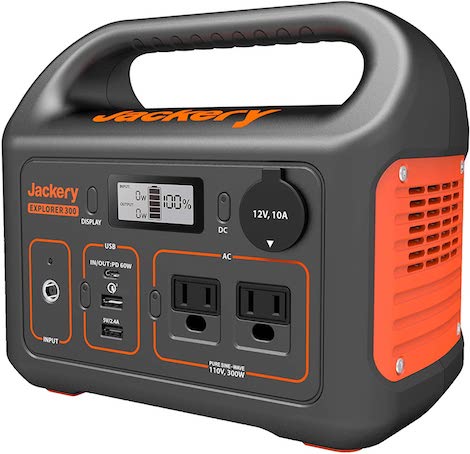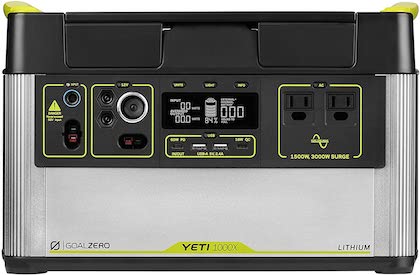Goal Zero and Jackery are two of the most common solar generator companies known today.
In this post, I compare both companies’ solar generators and solar panels.
Overall, Jackery’s solar generators are better than Goal Zero’s because they’re lighter and less expensive. Although Goal Zero’s solar generators have better port options and charge 30% faster from solar panels on average, Jackery’s power stations cost 22% less and weigh 6% less on average.
This article will be focusing primarily on the portable power stations offered by each company, but I’ll be comparing solar panel options towards the end of the post.
I matched up the portable power stations from each company based on similar battery capacities.
Due to this, some models could not be directly compared (Jackery Explorer 2000, Yeti 3000X, Yeti 6000X).
Here are the results from my solar generator comparisons:
Goal Zero vs. Jackery: Models Compared and Results
 |
|||
 |
|||
 |
|||
 |
|||
 |
|||
 |
If you take a look at the prices of these power stations from both companies, you’ll see (for the most part) that their prices jump to a much higher level as you get to the larger models in this comparison.
If you’re considering a larger model, I recommend reviewing options from other companies before coming to a conclusion on what to buy.
There are several different models and kits on the market that are similar in quality but less expensive than the Yeti 1000X ($1,300-$1,500) and Jackery 1500 ($1,600-$1,700).
One example is the Nature’s Generator Elite system. It costs less than both of the above ($1,000) yet it delivers a higher continuous AC output of 2,880W. This is about 800-1,000W higher than the Jackery 1500 and Yeti 1000X.
My main point here is to keep an open mind to your options so you get the best deal for your money without sacrificing quality.
Table of contents
- Goal Zero vs. Jackery Solar Generators – Key Differences
- Goal Zero Yeti 150 vs. Jackery Explorer 160
- Goal Zero Yeti 200X vs. Jackery Explorer 160
- Goal Zero Yeti 200X vs. Jackery Explorer 240
- Goal Zero Yeti 400 vs. Jackery Explorer 300
- Goal Zero Yeti 500X vs. Jackery Explorer 500
- Goal Zero Yeti 1000X vs. Jackery Explorer 1000
- Goal Zero Yeti 1500X vs. Jackery Explorer 1500
- Solar Panels – Goal Zero vs. Jackery
- Jackery SolarSaga 60W vs. Goal Zero Boulder 50 vs. Nomad 50
- Jackery SolarSaga 100W vs. Goal Zero Boulder 100 vs. Boulder 100 Briefcase vs. Nomad 100
- Jackery SolarSaga 200W vs. Goal Zero Boulder 200 BC vs. Nomad 200
If you’re looking for the best solar generator for a specific purpose (running a fridge, powering a cabin, etc.) or with a particular specification (LiFePO4 battery, fastest-charging), I recommend heading to the Solar Generator Round-Ups section of my website where I have a whole series of articles pertaining to these subjects.
Goal Zero vs. Jackery Solar Generators – Key Differences

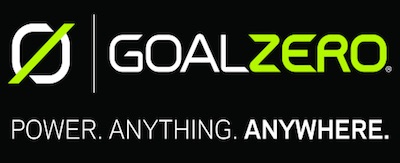
To give you more calculated measurements of my rankings/winners from the comparisons, I have six conclusions from my analysis of both Jackery’s and Goal Zero’s portable power stations.
Under these conclusions is a comprehensive table that highlights nearly every specification and feature and includes averages that prove my conclusions.
Conclusion #1 – Goal Zero has better USB port options than Jackery (for currently available models)
- Six out of the eight available Goal Zero solar generators have USB-C PD ports that output or input 60W of power. Jackery has only three power stations with this feature.
- In general, Jackery has 6/7 power stations with three USB ports, whereas Goal Zero has 6/8 with four USB ports.
Conclusion #2 – Jackery’s solar generators cost less than Goal Zero’s
- As a whole for currently available power stations, Jackery’s models cost an average of 22% less than Goal Zero’s.
- This was measured by taking the average cost per watt-hour of battery life for each solar generator.
Conclusion #3 – Jackery’s solar generators weigh less than Goal Zero’s
- On average, Goal Zero’s “X” series power stations are 6% heavier than Jackery’s.
- The biggest difference in weight can be seen when comparing the Explorer 1000 and Yeti 1000X as well as the Explorer 1500 and Yeti 1500X – Both Goal Zero Yeti models are about 10 lbs heavier than the Jackery models.
Conclusion #4 – Goal Zero has much faster solar recharging times
- On average, Goal Zero’s power stations recharge 30% faster from solar panels than Jackery’s.
- This applies to my direct comparison of models in the 1,500Wh range and lower.
- This percentage is found by taking the maximum solar input watts and dividing it by the battery capacity of each solar generator.
Conclusion #5 – Goal Zero has a wider variety of solar generators than Jackery
- Jackery currently has seven available solar generators ranging from 167Wh to 2,060Wh.
- Goal Zero has eight solar generators ranging from 168Wh to 6,071Wh of battery capacity.
- The Yeti 3000X and 6000X are Goal Zero’s largest power stations to date.
Conclusion #6 – Jackery has a 5.5% higher average Amazon rating than Goal Zero for currently available power stations
- For currently available models, Jackery averages 4.77/5 stars while Goal Zero averages 4.51/5 stars.
- This is only about a 5.5% difference, however, Jackery has over 20,000 combined Amazon ratings, while Goal Zero has a mere 1,800+ ratings.
The above conclusions came from my data table that lists out all solar generators / portable power stations from both Goal Zero and Jackery. I recommend checking it out if you want the full-scale view of my analysis.
Now, I’ll be getting into the individual comparisons of currently available models that are similar in battery capacity.
Goal Zero Yeti 150 vs. Jackery Explorer 160
| Power Station | Yeti 150 | Explorer 160 |
|---|---|---|
| Highest Battery Capacity | X* | |
| Most Port Options | Tie | Tie |
| Highest-Powered AC Ports | X | |
| Highest Solar Input | X | |
| Lightest Weight | X | |
| Cheapest Cost | X |
The Jackery Explorer 160 is better than the Goal Zero Yeti 150 because it is eight pounds lighter, has a more powerful AC port, and costs about $60 less than the Yeti 150. The Explorer 160 uses a lithium-ion battery compared to the Yeti 150, which gives makes it significantly lighter.
| Model | Pros | Cons |
|---|---|---|
| Goal Zero Yeti 150 | – Replaceable battery | – Heavy (12 lbs) |
| Jackery Explorer 160 | – Lightweight | – Slow recharging times |
| Solar Generator Model | Goal Zero Yeti 150 | Jackery Explorer 160 |
|---|---|---|
| Image |   |   |
| Battery Capacity | 168Wh | 167Wh |
| Battery Type | Lead-acid | Lithium-ion |
| Battery Cycle Life | Hundreds of cycles | 500 cycles to 80% capacity |
| Weight | 12 lbs (5.4 kg) | 3.97 lbs (1.8 kg) |
| Dimensions | 7.75 x 5.75 x 6.75 in (19.7 x 14.6 x 17.2 cm) | 7.4 x 4.5 x 6.7 in (18.8 x 11.4 x 17 cm) |
| USB Ports | 2x USB-A ports: 5V, up to 2.1A (10W max) | 2x USB-A ports: 5V, up to 2.4A (12W max) 1x USB-C port: 5V, up to 3A (15W max) |
| 12V DC Ports | 1x 6mm port: 12V, up to 10A (120W max) 1x 12V car port: 12V, up to 10A (120W max) | 1x 6.5mm x 1.4mm port: 12V, up to 7A (84W max) |
| Regulated USB & 12V Ports? | Yes (except for car port) | Yes |
| AC Ports | 1x AC port (80W continuous, 160W surge) | 1x AC port (100W continuous, 150W surge) |
| AC Inverter Sine Wave Type | Modified Sine Wave | Modified Sine Wave |
| Run Times | POV Camera (5Wh): 25 recharges Smartphone (12Wh): 9-12 recharges Tablet (30Wh): 6 recharges Laptop (50Wh): 1-2 recharges | POV Camera (5Wh): 34 recharges Smartphone (12Wh): 14 recharges DSLR Camera (18Wh): 10 recharges Tablet (30Wh): 5 recharges Laptop (50Wh): 3 recharges |
| Input Ports | 1x 8mm port: 14-29V, up to 5A (60W max) | 1x Solar/Car/Wall port: 12V-30V, up to 3.5A (42W max) |
| Recharge Times | AC Wall Charger (45W): 6 hours Car Charger (30W): 8 hours Solar Panel Charging Nomad 20 X 1(20W): 12-24 hours Boulder/Nomad 50 X 1(50W): 5-10 hours | AC Wall Charger: 5 hours Car Charger: 5 hours Solar Panel Charging SolarSaga 60W X 1 (60W): 4.5 hours |
| Charge Controller Type | PWM | MPPT |
| Comes With | 1x 45W Power Supply (AC Wall Charger) | 1x AC Charger Cable 1x Car Charger Cable |
| Warranty | 12 months | 24 months |
| Price | Check Price on Amazon | Check Price on Amazon |
General Similarities & Differences
The following are the most distinct differences between the Yeti 150 and Explorer 160:
- Weight – At 12 lbs, the Yeti 150 is 3x heavier than the Explorer 160
- Warranty – The Yeti 150 has a 12-month warranty, whereas the Explorer 160 has a 24-month warranty
- Battery Type – The Explorer 160 uses a lithium-ion battery which is efficient and lightweight, but the Yeti 150 uses a lead-acid battery which is heavy and inefficient compared to the li-ion type
Ports – Similarities & Differences
USB Ports
The Yeti 150 has just two standard USB-A ports rated at 10W max per port. This is because it was released in 2013 before USB-C technology was predominant.
The Explorer 160 has two USB-A ports with 12W max per port in addition to a 15W max USB-C port.
12V DC Ports
Possibly the only category where the Yeti 150 outshines the Explorer 160 is its:
- 120W max car port
- 120W max 6mm port (for Goal Zero accessories)
The Explorer 160 has a single 6.5mm x 1.4mm port with an 84W maximum output.
AC Ports
Both systems have one AC port:
- Explorer 160 – 100W continuous, 150W peak
- Yeti 150 – 80W continuous, 160W peak
Input Ports
The Yeti 150 has a higher input than the Explorer 160. However, the Explorer 160 actually charges faster from wall charging due to the 45W wall charger you get with the Yeti 150.
- Yeti 150 – 1x 8mm port: 14-29V, up to 5A (60W max)
- Explorer 160 – 1x solar/car/wall port: 12V-30V, up to 3.5A (42W max)
Solar Panel Pairings
The ideal solar panels to use with the Yeti 150 are ones rated from 50-100W from Goal Zero. The Nomad 50 and Boulder 50 are within this range as well as the Nomad or Boulder 100 panels.
The specs of these panels are in the sections toward the end of this post.
The Yeti 150 will accept up to 60W of solar, so if your 100W panel is bringing in 80W, the power station will only accept 60W.
For the Explorer 160, the best solar panel option is the SolarSaga 60W solar panel (affiliate link) because it has enough power to reach the maximum solar input of the power station in good sunlight.
(affiliate link) because it has enough power to reach the maximum solar input of the power station in good sunlight.
Final Thoughts
With a small solar generator like the ones in this section, you’d want the one that is the most lightweight – and in this case, it is clearly the Jackery Explorer 160.
Not only is it four times lighter, but it has a USB-C port and costs less than the Yeti 150.
Goal Zero Yeti 200X vs. Jackery Explorer 160
| Power Station | Yeti 200X | Explorer 160 |
|---|---|---|
| Highest Battery Capacity | X | |
| Most Port Options | X | |
| Highest-Powered AC Ports | X | |
| Highest Solar Input | X | |
| Lightest Weight | X | |
| Cheapest Cost | X |
The Jackery Explorer 160 is better than the Goal Zero Yeti 200X because it is half the cost of the Yeti 200X yet it performs similarly. The Yeti 200X has more and better port options, but the Explorer has a similar battery capacity (167Wh) versus the Yeti’s 187Wh battery.
| Model | Pros | Cons |
|---|---|---|
| Goal Zero Yeti 200X | – 60W USB-C PD port | – High price tag |
| Jackery Explorer 160 | – Lightweight & inexpensive | – Slow recharging times |
| Solar Generator Model | Goal Zero Yeti 200X | Jackery Explorer 160 |
|---|---|---|
| Image |   |   |
| Battery Capacity | 187Wh | 167Wh |
| Battery Type | Lithium-ion | Lithium-ion |
| Battery Cycle Life | 500 cycles to 80% capacity | 500 cycles to 80% capacity |
| Weight | 5 lbs (2.27 kg) | 3.97 lbs (1.8 kg) |
| Dimensions | 7.9 x 5.1 x 5.1 in (20 x 13 x 13 cm) | 7.4 x 4.5 x 6.7 in (18.8 x 11.4 x 17 cm) |
| USB Ports | 2x USB-A ports: 5V, up to 2.4A (12W max) 1x USB-C port: 5-12V, up to 3A (18W max) 1x USB-C PD port (input/output): 5-20V, up to 3A (60W max) | 2x USB-A ports: 5V, up to 2.4A (12W max) 1x USB-C port: 5V, up to 3A (15W max) |
| 12V DC Ports | 1x 6mm port: 12V, up to 10A (120W max) 1x 12V car port: 12V, up to 10A (120W max) | 1x 6.5mm x 1.4mm port: 12V, up to 7A (84W max) |
| Regulated USB & 12V Ports? | Yes (except for 6mm port) | Yes |
| AC Ports | 1x AC port (120W continuous, 200W surge) | 1x AC port (100W continuous, 150W surge) |
| AC Inverter Sine Wave Type | Modified Sine Wave | Modified Sine Wave |
| Run Times | POV Camera (5Wh): 38 recharges Smartphone (12Wh): 16 recharges DSLR Camera (18Wh): 11 recharges Tablet (30Wh): 6 recharges Laptop (50Wh): 3 recharges | POV Camera (5Wh): 34 recharges Smartphone (12Wh): 14 recharges DSLR Camera (18Wh): 10 recharges Tablet (30Wh): 5 recharges Laptop (50Wh): 3 recharges |
| Input Ports | 1x 8mm port: 13-22V, up to 7A (100W max) | 1x Solar/Car/Wall port: 12V-30V, up to 3.5A (42W max) |
| Recharge Times | AC Wall Charger (60W): 4.5 hours Solar Panel Charging Boulder/Nomad 50 X 1(50W): 4-8 hours Boulder/Nomad 100 X 1(100W): 2-4 hours | AC Wall Charger: 5 hours Car Charger: 5 hours Solar Panel Charging SolarSaga 60W X 1 (60W): 4.5 hours |
| Charge Controller Type | MPPT | MPPT |
| Comes With | 1x 60W power supply | 1x AC Charger Cable 1x Car Charger Cable |
| Warranty | 24 months | 24 months |
| Price | Check Price on Amazon | Check Price on Amazon |
| Read My Review | Read my full review here | N/A |
I owned the Yeti 200X and it was a great system. However, I blew out its AC port because I was using it at about 180W – Its maximum continuous output is 120W.
It worked great until that event happened, but it was my fault for running it at such a high amount of power.
The 200X is significantly overpriced compared to similar power stations, but if you really like Goal Zero products, it does its job well.

Ports – Similarities & Differences
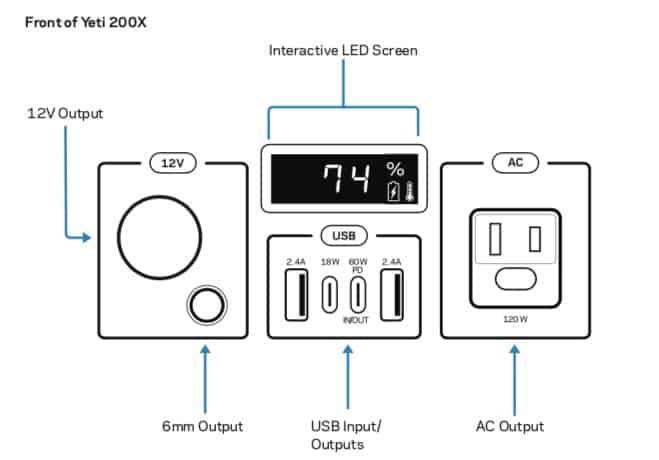
USB Ports
The Jackery 160 has one less USB port than the Yeti 200X. The port that sets the 200X apart is its 60W USB-C PD port.
This port is an input and output, so you can charge it relatively fast with this port.
12V DC Ports
The Explorer 160 has one 12V port:
- 1x 6.5mm x 1.4mm port: 12V, up to 7A (84W max)
The Yeti 200X has a car port and 6mm port with the following power ratings:
- 1x 6mm port: 12V, up to 10A (120W max)
- 1x 12V car port: 12V, up to 10A (120W max)
AC Ports
Both systems have one AC port:
- Explorer 160 – 100W continuous, 150W peak
- Yeti 200X – 120W continuous, 200W peak
Input Ports
A big advantage of the Yeti 200X is its solar recharging time. It can charge in as little as two hours with a 100W solar panel.
This is more than twice as fast as the Explorer 160’s recharging time from solar.
- Explorer 160 – 1x Solar/Car/Wall port: 12V-30V, up to 3.5A (42W max)
- Yeti 200X – 1x 8mm port: 13-22V, up to 7A (100W max)
Solar Panel Pairings
The Yeti 200X will work best with the Nomad 100 or Boulder 100
or Boulder 100 solar panels as it can use 100% of their power.
solar panels as it can use 100% of their power.
As mentioned before with the Explorer 160, the SolarSaga 60W panel is the ideal option for recharging.
is the ideal option for recharging.
Final Thoughts
The Yeti 200X is a great power station to use with smaller electronics and appliances, however, the Explorer 160 does the same thing and costs half that of the Yeti 200X.
If you’re considering getting a solar generator within this size range, I highly recommend the Jackery Explorer 160.
You can pick up one for yourself via the Amazon link below.
If you think the Yeti 200X is more ideal for your needs, I created an article and video on the system as well as an unboxing video. Find the links to my POV of this power station below:
Article: Goal Zero Yeti 200x Solar Powered Generator
Unboxing video: Unboxing the Goal Zero Yeti 200x Solar Powered Generator
Goal Zero Yeti 200X vs. Jackery Explorer 240
| Power Station | Yeti 200X | Explorer 240 |
|---|---|---|
| Highest Battery Capacity | X | |
| Most Port Options | X | |
| Highest-Powered AC Ports | X | |
| Highest Solar Input | X | |
| Lightest Weight | X | |
| Cheapest Cost | X |
The Jackery Explorer 240 is a better value than the Goal Zero Yeti 200X because it is $100 cheaper, has a larger battery by 53Wh, and has a higher-powered AC port (200W continuous vs. 120W continuous).
Although the Yeti 200X has better USB ports and faster recharge times, this is not enough of a difference to justify its $300 price tag.
| Model | Pros | Cons |
|---|---|---|
| Goal Zero Yeti 200X | – Can charge from USB-C, wall, car & solar | – Expensive |
| Jackery Explorer 240 | – Inexpensive, high-powered AC ports | – Only four port options |
| Solar Generator Model | Goal Zero Yeti 200X | Jackery Explorer 240 |
|---|---|---|
| Image |   |   |
| Battery Capacity | 187Wh | 240Wh |
| Battery Type | Lithium-ion | Lithium-ion |
| Battery Cycle Life | 500 cycles to 80% capacity | 500 cycles to 80% capacity |
| Weight | 5 lbs (2.27 kg) | 6.6 lbs (3 kg) |
| Dimensions | 7.9 x 5.1 x 5.1 in (20 x 13 x 13 cm) | 9.05 x 5.24 x 7.87 in (23 x 13.32 x 20 cm) |
| USB Ports | 2x USB-A ports: 5V, up to 2.4A (12W max) 1x USB-C port: 5-12V, up to 3A (18W max) 1x USB-C PD port (input/output): 5-20V, up to 3A (60W max) | 2x USB-A ports: 5V, up to 2.4A (12W max) |
| 12V DC Ports | 1x 6mm port: 12V, up to 10A (120W max) 1x 12V car port: 12V, up to 10A (120W max) | 1x 12V car port: 12V, up to 10A (120W max) |
| Regulated USB & 12V Ports? | Yes (except for 6mm port) | Yes |
| AC Ports | 1x AC port (120W continuous, 200W surge) | 1x AC port (200W continuous, 400W surge) |
| AC Inverter Sine Wave Type | Modified Sine Wave | Pure Sine Wave |
| Run Times | POV Camera (5Wh): 38 recharges Smartphone (12Wh): 16 recharges DSLR Camera (18Wh): 11 recharges Tablet (30Wh): 6 recharges Laptop (50Wh): 3 recharges | Smartphone (12Wh): 20 recharges Tablet (30Wh): 8 recharges Laptop (50Wh): 4 recharges Mini Fridge (35W): 3 hours |
| Input Ports | 1x 8mm port: 13-22V, up to 7A (100W max) | 1x Solar/Car/Wall port: 12-30V, up to 3.5A (65W max) |
| Recharge Times | AC Wall Charger (60W): 4.5 hours Solar Panel Charging Boulder/Nomad 50 X 1(50W): 4-8 hours Boulder/Nomad 100 X 1(100W): 2-4 hours | AC Wall Charger: 5.5 hours Car Charger: 6.5 hours Solar Panel Charging SolarSaga 60W X 1 (60W): 7 hours |
| Charge Controller Type | MPPT | MPPT |
| Comes With | 1x 60W power supply | 1x AC Charger Cable 1x Car Charger Cable |
| Warranty | 24 months | 24 months |
| Price | Check Price on Amazon | Check Price on Amazon |
| Read My Review | Read my full review here | Read my full review here |
General Similarities & Differences
The Explorer 240 lies above the Yeti 200X in terms of AC inverter output. This is because the Explorer 240 has a 200W continuous, 400W surge power compared to the Yeti 200X’s 120W continuous, 200W surge capabilities.
Ports – Similarities & Differences
USB Ports
The Yeti 200X dominates the Explorer 240 in terms of USB port options.
The 200X has four USBs, including:
- 2x USB-A ports: 5V, up to 2.4A (12W max)
- 1x USB-C port: 5-12V, up to 3A (18W max)
- 1x USB-C PD port (input/output): 5-20V, up to 3A (60W max)
On the other hand, the Explorer 240 only has two USB-A ports (12W max each).
12V DC Ports
The 200X and Explorer 240 both have similar 12V, 10A car ports, but the 200X has a 6mm port with the same 12V, 10A output.
This port is meant for Goal Zero accessories.
AC Ports
The Yeti 200X has a modified sine wave inverter which is not the best option for its AC ports. Its power transfer to your devices/appliances is less smooth than a pure sine wave inverter.
inverter which is not the best option for its AC ports. Its power transfer to your devices/appliances is less smooth than a pure sine wave inverter.
The Explorer 240 has a pure sine wave inverter, which makes it a more reliable system in terms of running appliances like fans, lights, etc. with ease.
The AC port on each system is listed below:
- Goal Zero Yeti 200X – 1x AC port (120W continuous, 200W surge)
- Jackery Explorer 240 – 1x AC port (200W continuous, 400W surge)
The Jackery 240 clearly wins in terms of its AC port’s power over the 200X.
Input Ports
- Goal Zero Yeti 200X – 1x 8mm port: 13-22V, up to 7A (100W max)
- Jackery Explorer 240 – 1x Solar/Car/Wall port: 12-30V, up to 3.5A (65W max)
Although the Explorer 240 has a 23W increase in input power compared to the Explorer 240, it still is not as capable as the Yeti 200X’s 100W maximum input.
Solar Panel Pairings
The ideal solar pairings for the Yeti 200X are Boulder or Nomad 100W solar panels.
If you’re using it at home only, the Boulder 100 panel will be a great option.
will be a great option.
However, if you’re on the go and want to travel and camp with the 200X, the Nomad 100 panel will be the best option for you as it is foldable.
will be the best option for you as it is foldable.
The Explorer 240 will work well with the SolarSaga 60W panel , but if you’d like a faster charge and don’t mind paying a little more for a bigger solar panel, the SolarSaga 100W panel
, but if you’d like a faster charge and don’t mind paying a little more for a bigger solar panel, the SolarSaga 100W panel will be able to recharge the system faster.
will be able to recharge the system faster.
The total input power for the Explorer 240 is 65W, so the extra power from the 100W panel will not be used in the recharging process.
However, you’ll be able to cut down an hour or two of recharging times when using the larger panel.
Final Thoughts
The Jackery Explorer 240 is a better portable power station than the Yeti 200X because:
- It has a 53Wh larger battery yet weighs only 1.6 lbs more than the 200X
- Has a pure sine wave AC inverter versus the 200X’s modified sine wave technology
- Its AC ports deliver more power
- It costs $100 less than the Yeti 200X
The Explorer 240 is the ideal solar generator to have in this comparison due to the value you get from the system.
It is not as diverse in USB port technology as the 200X and it doesn’t recharge as fast from solar panels, but it will give you the most bang for your buck.
I created a more in-depth review of the Jackery 240 in a separate article. It goes into more detail on the system to give your a better perspective on if it’s right for you.
Check it out right here: The Jackery 240 – Solar Charger for the Outdoors
Find the Jackery Explorer 240 via the link below.
Since the Yeti 200X and 500X are very similar in their lightweight capabilities and port options, you may want to learn more about their similarities and differences.
I created a post comparing the two power stations and you can find it here: Yeti 200X vs 500X – Which Is Ideal for You?.
Goal Zero Yeti 400 vs. Jackery Explorer 300
| Power Station | Yeti 400 | Explorer 300 |
|---|---|---|
| Highest Battery Capacity | X | |
| Most Port Options | X* | |
| Highest-Powered AC Ports | X | |
| Highest Solar Input | X | |
| Lightest Weight | X | |
| Cheapest Cost | X | |
| Highest Battery Cycle Life | X |
The Jackery Explorer 300 is better than the Goal Zero Yeti 400 because it’s one-fourth the Yeti 400’s weight (7.1 vs. 29 lbs), has better USB port options (1 USB-A, 1 USB-A QC, and 1 USB-C PD) than the Yeti 400’s two standard USB-A ports, and is $150 cheaper than the Yeti 400.
Although the Yeti 400 charges faster from solar panels and has a larger battery capacity, it uses a lead-acid battery, which makes it much heavier and less efficient than the Explorer’s lithium-ion battery.
| Model | Pros | Cons |
|---|---|---|
| Goal Zero Yeti 400 | – Replaceable battery | – Extremely heavy (29 lbs) |
| Jackery Explorer 300 | – 60W USB-C PD port | – Costs $50 more than Explorer 300 |
| Solar Generator Model | Goal Zero Yeti 400 | Jackery Explorer 300 |
|---|---|---|
| Image |   |  |
| Battery Capacity | 396Wh | 293Wh |
| Battery Type | Lead-acid | Lithium-ion |
| Battery Cycle Life | Hundreds of cycles | 500 cycles to 80% capacity |
| Weight | 29 lbs (13.2 kg) | 7.1 lbs (3.2 kg) |
| Dimensions | 10.25 x 8 x 8 in (26 x 20.3 x 20.3 cm) | 9.1 x 5.2 x 7.8 in (23 x 13.3 x 19.9 cm) |
| USB Ports | 2x USB-A ports: 5V, up to 2.1A (10W max) | 1x USB-A port: 5V, up to 2.4A (12W max) 1x USB-A QC 3.0 port: 5-12V, up to 3.0A (18W max) 1x USB-C PD port (Input/Output): 5-20V, up to 3.0A (60W max) |
| 12V DC Ports | 2x 6mm ports: 12V, up to 10A (120W max) 1x 12V car port: 12V, up to 10A (120W max) | 1x 12V car port: 12V, up to 10A (120W max) |
| Regulated USB & 12V Ports? | No (except for USB ports) | Yes |
| AC Ports | 2x AC ports (300W continuous, 600W surge) | 2x AC ports (300W continuous, 500W surge) |
| AC Inverter Sine Wave Type | Pure Sine Wave | Pure Sine Wave |
| Run Times | Smartphone (12Wh): 33-35 recharges Tablet (30Wh): 14 recharges Laptop (50Wh): 7-8 recharges Mini Fridge (35W): 6.5 hours | Smartphone (12Wh): 30 recharges Tablet (30Wh): 10 recharges Laptop (50Wh): 5-6 recharges Mini Fridge (35W): 5 hours |
| Input Ports | 1x 8mm port: 14-29V, up to 10A (120W max) | 1x Solar/Car/Wall port: 12-30V, up to 7A (90W max) |
| Recharge Times | AC Wall Charger (72W): 5 hours Car Charger (30W): 13 hours Solar Panel Charging Boulder/Nomad 100 X 1(100W): 6-12 hours Boulder/Nomad 200 X 1(200W): 3-6 hours | AC Wall Charger (90W): 4.5 hours Car Charger (82W): 5 hours Solar Panel Charging SolarSaga 100W X 1 (100W): 5 hours |
| Charge Controller Type | PWM | MPPT |
| Comes With | 1x 72W Power Supply (AC Wall Charger) | 1x AC Charger Cable 1x Car Charger Cable |
| Warranty | 12 months | 24 months |
| Price | Check Price on Amazon | Check Price on Amazon |
| Read My Review | N/A | Read my full review here |
General Similarities & Differences
The following differences are very similar to the ones from the Yeti 150 vs. Explorer 160:
- Weight – At 29 lbs, the Yeti 400 is 4x heavier than the Explorer 300
- Warranty – The Yeti 400 has a 12-month warranty, whereas the Explorer 300 has a 24-month warranty
- Battery Type – The Explorer 300 uses an efficient lithium-ion battery; the Yeti 400 uses a heavy and inefficient lead-acid battery
Ports – Similarities & Differences
USB Ports
While the Yeti 400 has two standard USB-A ports, the Explorer 300 has a USB-A, a QC 3.0 USB-A, and a 60W USB-C PD port.
The USB-C PD port allows you to charge the Explorer in addition to using it to charge devices.
12V DC Ports
Both the Yeti 400 and Explorer 300 have similar 12V, 10A car ports, but the Explorer has a cover on this port to keep it protected from dust and debris.
In addition, the Yeti 400 has two 6mm (120W max) ports for Goal Zero accessories.
AC Ports
Both systems have two AC ports, but their power ratings are slightly different.
The Yeti 400 has a 300W continuous, 600W surge rating, while the Explorer 300 has a 300W continuous, 500W surge rating.
Input Ports
The input ports are as follows:
- Goal Zero Yeti 400 – 1x 8mm port: 14-29V, up to 10A (120W max)
- Jackery Explorer 300 – 1x Solar/Car/Wall port: 12-30V, up to 7A (90W max)
Due to the slightly increased maximum input on the Yeti 400, it will charge about one hour faster from solar panels.
Both power stations charge at similar rates from their wall chargers.
From car charging, the Explorer 300 will charge in less than half the time that the Yeti 400 takes to charge at about five hours.
Solar Panel Pairings
The best solar panels for the Yeti 400 are the Boulder 200 Briefcase or Nomad 200
or Nomad 200 or two Boulder/Nomad 100s.
or two Boulder/Nomad 100s.
This allows the Yeti to take in its full input power while omitting the extra input from the sun. This setup will recharge the Yeti in about four hours in good sunlight.
The Jackery 300 is best used with the SolarSaga 100W panel , as it will give the power station near 80W of input power in good sunlight and take about five hours to recharge the battery completely.
, as it will give the power station near 80W of input power in good sunlight and take about five hours to recharge the battery completely.
Similar: Goal Zero Nomad 200 vs Boulder 200 (Complete Breakdown)
Final Thoughts
The Jackery Explorer 300 is better than the Yeti 400 mainly because it’s significantly lighter at 7.1 lbs.
The Yeti 400 is better than the Explorer 300 in solar input, inverter output, and battery capacity, but its weight of 29 lbs makes it hard to be used in any mobile activity.
I created a guide to the Jackery 300 and compare it to two other solar generators – the Rockpals 300 and Renogy Phoenix 300.
This post will show you which one’s specs are best for your power needs. I highly recommend giving it a read! Find it here: Jackery Explorer 300 Review (Comparison & Analysis).
With a little extra battery capacity and updated USB ports, the Jackery Explorer 300 makes a great companion for off-grid device charging.
Check out the Explorer 300 via the link below.
For a faster-charging solar generator that’s similar in size to the Explorer 300, I recommend reading into the Bluetti EB3A. It charges in less than half the time from solar panels and wall charging. I compare these models in my comparison post found here: Bluetti vs. Jackery – Which Is Best? (4 Models Compared) .
.
Goal Zero Yeti 500X vs. Jackery Explorer 500
| Power Station | Yeti 500X | Explorer 500 |
|---|---|---|
| Highest Battery Capacity | X | |
| Most Port Options | X | |
| Highest-Powered AC Ports | X | |
| Highest Solar Input | X | |
| Lightest Weight | X | |
| Cheapest Cost | X |
The Jackery Explorer 500 is better than the Goal Zero Yeti 500X because it has a more powerful AC port rating (500W vs. 300W) and is $200 cheaper than the Yeti 500X. The 500X has better USB ports and a 1.5x higher solar input, however, this does not justify its nearly 30% higher price.
| Model | Pros | Cons |
|---|---|---|
| Goal Zero Yeti 500X | – 3 different USB options | – Expensive |
| Jackery Explorer 500 | – Powerful inverter, inexpensive | – Only has standard USB-A ports |
| Solar Generator Model | Goal Zero Yeti 500X | Jackery Explorer 500 |
|---|---|---|
| Image |   |   |
| Battery Capacity | 505Wh | 518Wh |
| Battery Type | Lithium-ion | Lithium-ion |
| Battery Cycle Life | 500 cycles to 80% capacity | 500 cycles to 80% capacity |
| Weight | 12.9 lbs (5.85 kg) | 13.32 lbs (6.04 kg) |
| Dimensions | 7.5 x 11.25 x 5.8 in (19.05 x 28.58 x 14.73 cm) | 11.8 x 7.6 x 9.2 in (30.1 x 19.3 x 24.2 cm) |
| USB Ports | 2x USB-A ports: 5V, up to 2.4A (12W max) 1x USB-C port: 5/9V, up to 3.0A (18W max) 1x USB-C PD port (Input/Output): 5-20V, up to 3.0A (60W max) | 3x USB-A ports: 5V, up to 2.4A (12W max) |
| 12V DC Ports | 1x 6mm port: 12V, up to 10A (120W max) 1x 12V car port: 12V, up to 10A (120W max) | 2x 6.5mm x 1.4mm ports: 12V, up to 7A (84W max) 1x 12V car port: 12V, up to 10A (120W max) |
| Regulated USB & 12V Ports? | Yes (except for 6mm ports) | Yes |
| AC Ports | 2x AC ports (300W continuous, 1,200W surge) | 2x AC ports (500W continuous, 1,000W surge) |
| AC Inverter Sine Wave Type | Pure Sine Wave | Pure Sine Wave |
| Run Times | Smartphone (12Wh): 42 recharges Tablet (30Wh): 17 recharges Laptop (50Wh): 10 recharges Pellet Grill (60W): 9 hours CPAP (65W): 8 hours 42" LED TV (100W): 5 hours | Smartphone (12Wh): 44 recharges Tablet (30Wh): 17 recharges Laptop (50Wh): 10 recharges CPAP (65W): 8 hours 42" LED TV (100W): 5 hours |
| Input Ports | 2x 8mm ports: 13-22V, up to 10A (150W max) | 1x Solar/Car/Wall port: 12-30V, up to 3.5A (100W max) |
| Recharge Times | AC Wall charger (60W): 10 hours Car charger (120W): 4.5 hours Solar Panel Charging Boulder/Nomad 100 X 1(100W): 6-12 hours Boulder/Nomad 200 X 1(200W): 3-6 hours | AC Wall Charger: 7.5 hours Car Charger: 7.5 hours Solar Panel Charging SolarSaga 100W X 1 (100W): 9.5 hours |
| Charge Controller Type | MPPT | MPPT |
| Comes With | 1x 60W Wall Charger | 1x AC Charger Cable 1x Car Charger Cable |
| Warranty | 24 months | 24 months |
| Price | Check Price on Amazon | Check Price on Amazon |
| Read My Review | Read my full review here | N/A |
The Explorer 500 and Yeti 500X are harder to compare for a winner because although they are similar in battery capacity, they are different in nearly every other category.
Ports – Similarities & Differences
The two main differences in these power stations in terms of ports are:
- AC ports
- USB ports
USB Ports
For USB ports, the 500X has four, including two standard USB-A, one USB-C, and one USB-C PD port. The Explorer 500 only has three standard USB-A ports.
As modern technology adapts more towards USB-C ports, the 500X is better because it is up to date in this field.
12V DC Ports
The Yeti 500X and Explorer 500 both have a 12V, 10A car port.
The Yeti 500X has a 12V, 10A 6mm port for Goal Zero accessories such as camp lights.
The Explorer 500 has two small DC (6.5mm x 1.4mm) ports rated at 12V, 7A max.
AC Ports
The 500X has two AC ports whereas the Explorer 500 only has one.
The difference in AC ports does not matter as much, but having one additional AC port can make a big difference depending on what you intend to power/charge.
The 500X’s inverter for its AC ports is rated at 300W continuous and 1,200W surge power. These are drastically different numbers.
Most solar generators of any size do not have a surge power rating that is more than 2x its continuous output rating. The 500X’s surge power is 4x its continuous power output!
For example, the Titan solar generator has a 3,000W continuous output with 6,000W surge power. The Yeti 6000X has a 2,000W continuous, 3,500W surge rating.
solar generator has a 3,000W continuous output with 6,000W surge power. The Yeti 6000X has a 2,000W continuous, 3,500W surge rating.
Whatever the 500X is doing internally to make these wild differences in power, it is by far the largest difference in inverter output that I’ve ever seen.
output that I’ve ever seen.
However, this is not to say that the 500X dominates the Explorer 500 in this comparison. The Explorer 500 is capable of 500W continuous and 1,000W surge power.
It has a higher continuous rating, but lower surge power than the 500X. The main deciding factor to pick a winner is asking the question: “Which number (continuous or surge) is more practical to people using this power station?”
And that answer is continuous power output.
The surge, or “peak”, rating for an inverter is mainly for appliances that need an initial jump of power before diverting to its normal continuous power consumption.
Surging the power station with appliances that consume more power than the inverter can handle can significantly reduce the system’s battery capacity.
If you consistently do this, it not only lowers the cycle life (overall lifetime) of the battery but also can overheat it and cause it to shut down or malfunction.
Overall, the Explorer 500 wins this category due to its 200W higher continuous power output.
Input Ports
The 500X has two 8mm inputs (one in the front and one in back). Even though this may be convenient for some people for the optimal set up with solar panels and device charging, you can only use one port at a time.
The ports are both rated for 150W maximum, giving the fastest charging time (from 0% to 100%) at 3.4 hours.
This is 1.5 times more input power than the Explorer 500’s 100W maximum input, which can be recharged in as little as 5.2 hours.
Although seemingly a small difference, the 50W makes a big impact on charge times since these solar generators are fairly small.
The 500X will charge faster from solar panels and from a car charger compared to the Explorer 500, but the Explorer will charge faster from AC wall charging (7.5 hours vs. 10 hours).
Solar Panel Pairings

The ideal pairings for the 500X are:
- 1x Boulder 200 Briefcase
 or Nomad 200
or Nomad 200 solar panel
solar panel - 2x Boulder 100
 or Nomad 100
or Nomad 100 solar panels
solar panels
In ideal sun conditions, these 200W setups at an average of 80% efficiency will output about 160W of power into the 500X.
The MPPT charge controller can easily handle this power as it will take in 150W and disregard the extra 10W coming in.
The SolarSaga 100W panel is best for the Explorer 500. In ideal sun conditions, you’ll receive about 80W of input power, which will recharge the Explorer in about 6.5 hours.
is best for the Explorer 500. In ideal sun conditions, you’ll receive about 80W of input power, which will recharge the Explorer in about 6.5 hours.
However, if you want to get the fastest charge possible with Jackery solar panels, you can connect a SolarSaga 100W and 60W panel together to get about 130W of input power (80% efficiency) in good sunlight.
The Explorer 500’s MPPT controller will factor out the extra wattage from the panels to give you the 100W maximum input.
With this setup, you can recharge the Jackery in about 5.5 hours.
This is a good idea for you if you want to charge the Explorer 500 on a cloudy day, as the extra solar panel will still be able to bring in a steady flow of power to the system, of course, depending on how cloudy it is outside.
Unique Features
| Goal Zero Yeti 500X | Jackery Explorer 500 |
|---|---|
| 60W USB-C PD port | LED light/lantern |
| Foldable carrying handle | N/A |
| Dual charging ports | N/A |
Final Thoughts
Overall, the Explorer 500 wins this comparison because it is $200 cheaper than the 500X. Adjustments can be made to alter the ports, for example, a USB to USB-C cable, and even an AC power strip if need be.
The solar input difference, although important, is not significant enough to put the 500X on top. For the price of a 500X, you can buy an Explorer 500 and an Explorer 160 and still have $60 to spare.
However, with my experience using and having the Rockpals Rockpower 500, which is a similar solar generator within the same battery size as these systems, I found that it worked phenomenally with a 400-500W space heater.
It has similar features to both the Yeti 500X and Explorer 500, but it may be an option for you to consider if you intend to buy a system within this 500Wh range.
Check out my article on the Rockpower 500 here: Rockpals Rockpower 500 Review (Testing, Pricing, and More)
If you like what the Explorer 500 has to offer, check it out for yourself via the links below.
Since the Explorer 500 and Explorer 300 are very different in terms of ports options, I compared the two to see what works best for you. Check it out right here: Jackery Explorer 300 vs 500 – Overview & Analysis.
If you think you may like the port options and faster charging on the Yeti 500X, I go into some more detail on it in my review article here: Yeti 500x by Goal Zero – Overview & Stats – Peak Performance.
I also compare the 500X to the Yeti 400 to give you some more insights on the ideal system.
Clearly, the 500X is better in most categories, but is it worth the price? Find this piece here: YETI 500X vs 400 – Goal Zero Comparison Piece
Goal Zero Yeti 1000X vs. Jackery Explorer 1000
| Power Station | Yeti 1000X | Explorer 1000 |
|---|---|---|
| Highest Battery Capacity | X | |
| Most Port Options | X | |
| Highest-Powered AC Ports | X | |
| Highest Solar Input | X | |
| Lightest Weight | X | |
| Cheapest Cost | X |
Overall, the Goal Zero Yeti 1000X is better than the Jackery Explorer 1000 because it has more powerful AC ports (1,500W vs. 1,000W continuous), more USB and 12V port options, and charges over 3.5x faster from solar panels (600W vs. 163W).
Although it’s 10 lbs heavier and costs $300 more than the Explorer 1000, the 1000X is more technologically sound with its USB-C PD port, Anderson output, and 600W maximum recharging input.
| Model | Pros | Cons |
|---|---|---|
| Goal Zero Yeti 1000X | – High-powered inverter, fast recharging | – Very expensive |
| Jackery Explorer 1000 | – Lightweight | – Slow recharging |
| Solar Generator Model | Goal Zero Yeti 1000X | Jackery Explorer 1000 |
|---|---|---|
| Image |   | 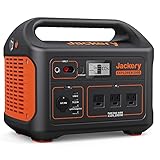  |
| Battery Capacity | 983Wh | 1,002Wh |
| Battery Type | Lithium-ion | Lithium-ion |
| Battery Cycle Life | 500 cycles to 80% capacity | 500 cycles to 80% capacity |
| Weight | 31.68 lbs (14.37 kg) | 22.04 lbs (10 kg) |
| Dimensions | 15.25 x 10.23 x 9.86 in (38.74 x 25.98 x 25.04 cm) | 13.1 x 9.2 x 11.1 in (33.3 x 23.3 x 28.3 cm) |
| USB Ports | 2x USB-A ports: 5V, up to 2.4A (12W max) 1x USB-C port: 5-12V, up to 3.0A (18W max) 1x USB-C PD port (input/output): 5-20V, up to 3.0A (60W max) | 1x USB-A port: 5V, up to 2.4A (12W max) 1x USB-A QC 3.0 port: 5-12V, up to 3A (18W max) 1x USB-C port: 5-12V, up to 3A (18W max) |
| 12V DC Ports | 2x 6mm ports: 12V, up to 10A (120W max) 1x 12V car port: 12V, up to 15A (180W max) 1x 12V High Power Port: 12V, up to 15A (180W max) | 1x 12V car port: 12V, up to 10A (120W max) |
| Regulated USB & 12V Ports? | Yes | Yes |
| AC Ports | 2x AC ports (1,500W continuous, 3,000W surge) | 3x AC ports (1,000W continuous, 2,000W surge) |
| AC Inverter Sine Wave Type | Pure Sine Wave | Pure Sine Wave |
| Run Times | Smartphone (12Wh): 82 recharges Tablet (30Wh): 33 recharges Laptop (50Wh): 20 recharges CPAP (65W): 15 hours 42" LED TV (100W): 10 hours Microwave (1,000W): 1 hour | Smartphone (12Wh): 85 recharges Tablet (30Wh): 33 recharges Laptop (50Wh): 20 recharges CPAP (65W): 15 hours 42" LED TV (100W): 9.5 hours Microwave (1,000W): 1 hour |
| Input Ports | 1x 8mm port: 14-50V, up to 10A (150W max) 1x High Power Port: 14-50V, up to 50A (600W max) | 1x Car/Wall port: 12-30V, up to 8.33A (163W max) 1x Anderson port: 12-30V, up to 8.33A (163W max) |
| Recharge Times | AC Wall Charger (120W): 9 hours Car Charger (30W): 37 hours Solar Panel Charging Boulder/Nomad 200 X 2 (400W): 3-5 hours Boulder/Nomad 200 X 3 (600W): 2-4 hours Boulder/Nomad 200 X 4 (800W): 2-2.5 hours | AC Wall Charger: 7 hours Car Charger: 14 hours Solar Panel Charging SolarSaga 100W X 2 (200W): 8 hours |
| Charge Controller Type | MPPT | MPPT |
| Comes With | 1x 120W Power Supply (AC Wall Charger) | 1x Car Charger Cable 1x AC Charger Cable 1x Solar Panel Parallel Adapter Cables |
| Warranty | 24 months | 24 months |
| Price | Check Price on Amazon | Check Price on Amazon |
| Read My Review | N/A | Read my full review here |
General Similarities & Differences
The biggest differences between the Yeti 1000X and Explorer 1000 include:
- Solar recharging times – The Yeti 1000X can recharge in as little as two hours, whereas the Explorer 1000 takes eight hours
- Weight – At 22 lbs, the Explorer 1000 is the lightest power station for its size; the Yeti 1000X weighs 31.68 lbs
- Price – The Yeti 1000X costs $1,300, which is expensive compared to the Jackery 1000’s $1,000 price
Ports – Similarities & Differences
USB Ports
With four total USBs on the Yeti 1000X and three on the Explorer 1000, the Yeti takes the advantage not only in the number of USB ports but in the quality of them as well.
| Goal Zero Yeti 1000X | Jackery Explorer 1000 |
|---|---|
| 2x USB-A ports: 5V, up to 2.4A (12W max) | 1x USB-A port: 5V, up to 2.4A (12W max) |
| 1x USB-C port: 5-12V, up to 3.0A (18W max) | 1x USB-A QC 3.0 port: 5-12V, up to 3A (18W max) |
| 1x USB-C PD port (input/output): 5-20V, up to 3.0A (60W max) | 1x USB-C port: 5-12V, up to 3A (18W max) |
The main advantage that the Yeti 1000X has over the Explorer 1000 is its USB-C PD port, capable of being an input and output, with up to 60W of power both ways.
12V DC Ports
The Yeti 1000X and Jackery 1000 both share a car port output, but the 1000X’s is more powerful.
- Yeti 1000X – 1x 12V car port: 12V, up to 15A (180W max)
- Explorer 1000 – 1x 12V car port: 12V, up to 10A (120W max)
The car port is the only 12V port from the Jackery power station, but the Yeti 1000X has three additional port options, which are as follows:
- 2x 6mm ports: 12V, up to 10A (120W max)
- 1x 12V High Power Port: 12V, up to 15A (180W max)
The “High Power Port” is the exact same port as an Anderson Powerpole connection.
These additional ports can be useful for powering DC appliances and electronics, the main advantage being that these ports do not use the AC inverter, which saves some battery life.
AC Ports
The Explorer 1000 has one additional AC port over the 1000X, but its inverter is overall less powerful than its competitor.
- Jackery Explorer 1000 – 3x AC ports (1,000W continuous, 2,000W surge)
- Yeti 1000X – 2x AC ports (1,500W continuous, 3,000W surge)
Having 500W of additional continuous AC power means that you can run a wider array for AC appliances with the 1000X.
Input Ports
AC wall charging is slightly faster with the Explorer 1000 (7 hours) than with the Yeti 1000X (9 hours).
However, the Yeti 1000X has an optional 230W and 600W wall charger that will drastically improve wall charging times.
In addition, the 1000X is faster at car charging and solar charging.
This has to do with Goal Zero’s 120W car charger versus Jackery’s 30W charger and the 1000X’s 600W solar input versus the Explorer 1000’s 163W max solar input.
Explorer 1000:
- 1x Car/Wall port: 12-30V, up to 8.33A (163W max)
- 1x Anderson port: 12-30V, up to 8.33A (163W max)
Yeti 1000X:
- 1x 8mm port: 14-50V, up to 10A (150W max)
- 1x High Power Port: 14-50V, up to 50A (600W max)
Solar Panel Pairings
Both the Jackery 1000 and Yeti 1000X have Anderson Powerpole inputs, which makes it easier to find and use third-party solar panels to recharge them with.
The best pairings for the Jackery 1000 are with 200W of solar panels. That can be formed with the SolarSaga 200W panel or two SolarSaga 100W panels
or two SolarSaga 100W panels .
.
The Explorer 1000 comes with a solar panel parallel adapter cable so you can connect the two 100W panels into the power station’s input easily.
Jackery 1000 Recharging Time:
- SolarSaga 100W X 2 (200W): 8 hours
The Yeti 1000X can utilize up to 600W of solar input, which means the ideal setup would be with about 800W of solar panels. At 80% efficiency from the panels (average), you’ll get about 640W of solar input with 800W of panels in good sunlight.
This is ideal for the 1000X as you’ll be able to utilize all of the input power capabilities that the solar generator offers.
With Goal Zero solar panels, you can use four Nomad 200 or Boulder 200
or Boulder 200 panels with a combiner cable to input into its High Power Port (Anderson Powerpole).
panels with a combiner cable to input into its High Power Port (Anderson Powerpole).
Yeti 1000X Recharging Time:
- Boulder/Nomad 200 X 4 (800W): 2-2.5 hours
Clearly, the Yeti 1000X dominates solar recharging speeds.
Unique Features
| Jackery Explorer 1000 | Goal Zero Yeti 1000X |
|---|---|
| Ultra lightweight (22 lbs) | 600W input power (3x higher than Jackery 1000) |
| Flashlight/lantern on its side | Anderson Powerpole output |
| Anderson Powerpole input (only Jackery model to have this) | Battery expansion available with Yeti Tank batteries |
Final Thoughts
The Goal Zero Yeti 1000X is the clear winner over the Jackery Explorer 1000 in terms of port options, recharging times, and AC power output.
Although the Jackery 1000 is ten pounds lighter and $300 cheaper than the Yeti 1000X, its performance may justify its higher pricing for you.
Check out the Yeti 1000X via the link below.
Goal Zero Yeti 1500X vs. Jackery Explorer 1500
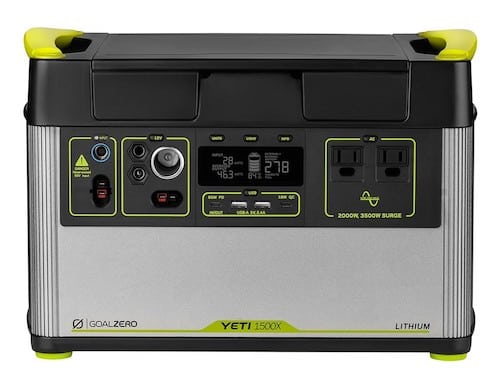

| Power Station | Yeti 1500X | Explorer 1500 |
|---|---|---|
| Highest Battery Capacity | X | |
| Most Port Options | X | |
| Highest-Powered AC Ports | X | |
| Highest Solar Input | X | |
| Lightest Weight | X | |
| Cheapest Cost | X |
The Jackery Explorer 1500 is better than the Goal Zero Yeti 1500X because it has several similar specifications as the 1500X yet it costs $400 less. The Explorer 1500’s other major advantage is its 10 lb lighter weight (35.2 vs. 45.64 lbs).
The Yeti 1500X has a better USB and 12V port selection and also has a slightly more powerful AC inverter rating (2,000W vs. 1,800W continuous), but in my opinion this does not justify its hefty $2,000 price.
| Model | Pros | Cons |
|---|---|---|
| Goal Zero Yeti 1500X | – High input & output power – WiFi-enabled | – Costs $400 more than Explorer 1500 |
| Jackery Explorer 1500 | – Fast recharging | – Only uses proprietary recharging input |
| Solar Generator Model | Goal Zero Yeti 1500X | Jackery Explorer 1500 |
|---|---|---|
| Image | 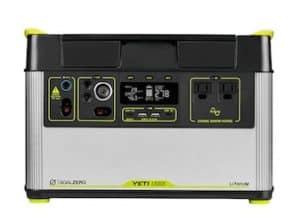 |   |
| Battery Capacity | 1,516Wh | 1,534Wh |
| Battery Type | Lithium-ion | Lithium-ion |
| Battery Cycle Life | 500 cycles to 80% capacity | 500 cycles to 80% capacity |
| Weight | 45.64 lbs (20.7 kg) | 35.2 lbs (15.5 kg) |
| Dimensions | 15.25 x 10.23 x 10.37 in (38.74 x 25.98 x 26.34 cm) | 14 x 10.4 x 12.7 in (35.6 x 26.4 x 32.3 cm) |
| USB Ports | 2x USB-A ports: 5V, up to 2.4A (12W max) 1x USB-C port: 5-12V, up to 3.0A (18W max) 1x USB-C PD port (input/output): 5-20V, up to 3.0A (60W max) | 1x USB-A port: 5V, 2.4A (12W max) 1x USB-A QC 3.0 port: 5-12V, up to 3.0A (18W max) 1x USB-C PD port: 5-20V, up to 3A (60W max) |
| 12V DC Ports | 2x 6mm ports: 12V, up to 10A (120W max) 1x 12V car port: 12V, up to 13A (160W max) 1x 12V High Power Port: 12V, up to 30A (360W max) | 1x 12V car port: 12V, up to 10A (120W max) |
| Regulated USB & 12V Ports? | Yes | Yes |
| AC Ports | 2x AC ports (2,000W continuous, 3,500W surge) | 3x AC ports (1,800W continuous, 3,600W surge) |
| AC Inverter Sine Wave Type | Pure Sine Wave | Pure Sine Wave |
| Run Times | Smartphone (12Wh): 127 recharges Tablet (30Wh): 51 recharges Laptop (50Wh): 31 recharges CPAP (65W): 24 hours Full-Size Refrigerator (55W): 28 hours Pellet Grill (60W): 26 hours 42" LED TV (100W): 15 hours Microwave (1,000W): 1.5 hours | Full-Size Refrigerator (55W): 28 hours Coffee Maker (550W): 2 hours Microwave (1,000W): 1.5 hours |
| Input Ports | 2x 8mm ports: 14-50V, up to 10A (150W max) 1x High Power Port: 14-50V, up to 50A (600W max) | 2x AC/SolarSaga ports: 24V, up to 10.5A (250W max) |
| Recharge Times | AC Wall Charger (120W): 14 hours Solar Panel Charging Boulder/Nomad 200 X 2 (400W): 4-8 hours Boulder/Nomad 200 X 4 (800W): 3-4 hours Boulder/Nomad 200 X 6 (1,200W): 3 hours | AC Wall Charger: 6 hours 2x AC Wall Chargers: 3.5 hours Car Charger (120W): 13 hours Solar Panel Charging SolarSaga 100W X 2: 9.5 hours SolarSaga 100W X 4: 5 hours |
| Charge Controller Type | MPPT | MPPT |
| Comes With | 1x 120W Power Supply (AC Wall Charger) | 1x Car Charger Cable 1x AC Charger Cable 2x Solar Panel Parallel Adapter Cables |
| Warranty | 24 months | 24 months |
| Price | Check Price on Amazon | Check Price on Amazon |
| Read My Review | Read my full review here | N/A |
General Similarities & Differences
The Yeti 1000X and Jackery 1500 are very similar, but there are a few things that separate them which are:
- Weight – The Jackery 1500 weighs 10 lbs less than the 1000X (35.2 vs. 45.64 lbs)
- Price – The Yeti 1000X costs $400 more than the Explorer 1500 ($2,000 vs. $1,600)
- WiFi-Connection – The Yeti 1000X uses the Yeti App 3.0
 to pair with your phone or tablet; Jackery systems do not yet have this feature
to pair with your phone or tablet; Jackery systems do not yet have this feature
Ports – Similarities & Differences
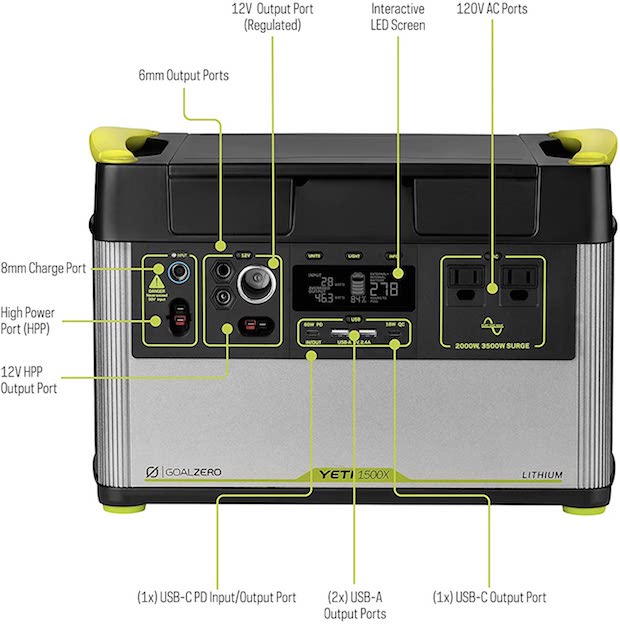
USB Ports
Like the rest of the Yeti “X” solar generators, the 1500X has four USB ports with the following specifications:
- 2x USB-A ports: 5V, up to 2.4A (12W max)
- 1x USB-C port: 5-12V, up to 3.0A (18W max)
- 1x USB-C PD port (input/output): 5-20V, up to 3.0A (60W max)
The Jackery Explorer 1500 has one less USB port, but includes three different ports:
- 1x USB-A port: 5V, 2.4A (12W max)
- 1x USB-A QC 3.0 port: 5-12V, up to 3.0A (18W max)
- 1x USB-C PD port: 5-20V, up to 3A (60W max)
Overall, both power stations offer a variety of USB options, but the Yeti 1500X’s additional USB option makes it ideal for charging multiple devices at once.
12V DC Ports
The Explorer 1500 has one 12V, 10A car port located on the upper right-hand side of the power station.
The Yeti 1500X goes well beyond a single car port option, as can be seen by its 12V ports below:
- 2x 6mm ports: 12V, up to 10A (120W max)
- 1x 12V car port: 12V, up to 13A (160W max)
- 1x 12V High Power Port: 12V, up to 30A (360W max)
AC Ports
Both systems offer a similar AC inverter output. The Yeti 1500X has the higher continuous output, while the Explorer 1500 takes the lead in surge power capabilities.
Yeti 1500X:
- 2x AC ports (2,000W continuous, 3,500W surge)
Explorer 1500:
- 3x AC ports (1,800W continuous, 3,600W surge)
The Explorer 1500 has three AC ports to Jackery’s two ports, which makes it easier for use with several AC power needs.
Input Ports
The Yeti 1500X has three total input ports:
- 2x 8mm ports: 14-50V, up to 10A (150W max)
- 1x High Power Port: 14-50V, up to 50A (600W max)
The second 8mm port cannot be seen on the front or back of the power station, and that is because it is located underneath its lid.
Both 8mm ports cannot be used simultaneously.
You also cannot charge the system by an 8mm port and its High Power Port at the same time.
The Explorer 1500 contains two of its proprietary inputs for charging via solar, car, or from the wall.
- 2x AC/SolarSaga ports: 24V, up to 10.5A (250W max)
You can combine solar charging with both ports to get a total of 500W of solar input.
In addition, if you decide to get a second AC charger, you can use both of them at the same time to charge the power station in as little as 3.5 hours.
Overall, the Yeti 1500X can charge 100W faster than the Explorer 1500 from solar panels, however, the Explorer 1500 charges twice as fast from the wall with a single AC charger.
If you were to get the 600W AC charger for the Yeti 1500X and compare it to the Jackery 1500’s dual AC charging option, the 1500X would charge in about three hours, whereas the Explorer 1500 would recharge in about 3.5 hours.
Solar Panel Pairings
The Yeti 1500X will be able to take in 600W of solar input, meaning that 800W of solar panels with an average of 80% efficiency in good sunlight will bring in about 640 watts of power to the system.
Its MPPT charge controller will factor out the extra power, bringing you the full 600W of power needed to recharge the 1500X the fastest.
If you live in an area that doesn’t get consistent sunlight, 1,000-1,200W of solar panels may be a smart idea if you’re looking for the fastest possible recharging times.
Solar panel recharging options (approx. recharging times = 2.5-4 hours):
- 4-6x Boulder 200
 or Nomad 200
or Nomad 200 panels (800-1,200W)
panels (800-1,200W)
Since the Explorer 1500 can take in up to 500W of solar input, the best option to get the fastest recharging time is the following:
- 3x SolarSaga 200W panels
 (600W) + 1x SolarSaga 100W panel
(600W) + 1x SolarSaga 100W panel (100W) = 700W
(100W) = 700W
At 80% solar panel efficiency, this results in about 560W of solar input with good sunlight.
This will recharge the Explorer 1500 in about 3-3.5 hours.
If you have inconsistent weather, you may want to use four 200W panels to adjust to the weather conditions:
- 4x SolarSaga 200W panels (800W)
Bringing in this much power will result in about 640W in ideal sun conditions. This is 140W over the input limit, but the MPPT can filter out the extra power.
Unique Features
| Goal Zero Yeti 1500X | Jackery Explorer 1500 |
|---|---|
| Optional 230W & 600W AC charging | Dual AC charging capability |
| Yeti mobile application | LED flashlight on its side |
| 12V ports (160W car port; 360W APP) | Upgraded LCD screen |
| Optional expandable batteries |
Expandable Batteries – Yeti 1500X
The Yeti 1500X can be used with Yeti Tank batteries , which are 1,200Wh lead-acid batteries.
, which are 1,200Wh lead-acid batteries.
These batteries are connected via the Link Expansion Module, which allows the batteries to connect to the Yeti 1500X.
This is a good option for people who want to use their power station specifically at home because it will give longer battery life to power appliances.
Improved LCD Screen – Jackery Explorer 1500
An interesting upgrade to the Explorer 1500 is its LCD screen, which is completely different from Jackery’s smaller solar generators.
It displays more data with its widened screen, which may come in handy when using solar panels or when using a lot of power at once to maintain input/output thresholds.
Final Thoughts
The Jackery Explorer wins this comparison because it has similar capabilities compared to the Yeti 1500X, yet it is about $400 cheaper.
The Explorer 1500 is also ten pounds lighter than the 1500X, making it easier to carry to your desired destinations.
You can find the Explorer 1500 from the links below if this power station suits your needs properly:
If you’d like to learn more about the Yeti 1500X, I have a review post of the system where I:
- Discuss price comparisons between similar solar generators
- Talk about the Yeti App feature
- Compare it with the predecessor of the 1500X, the Yeti 1400 Lithium
Read this post here: The Yeti 1500X from Goal Zero – Overview + Comparison.
Jackery vs. Goal Zero Solar Generators – Which Is Better Overall?
Jackery solar generators are better than Goal Zero’s because their pricing per model (on average) is 22% less. Goal Zero has better USB and 12V ports as well as faster recharging times for the majority of their power stations, but Jackery’s systems bring greater value for their prices.
Solar Panels – Goal Zero vs. Jackery
I compared these three panels with Goal Zero’s Boulder and Nomad panels with similar or the same wattage.
See the winners of each category below:
Goal Zero Boulder 50 vs. Goal Zero Nomad 50 | - 2x lighter than Nomad 50 - More port options |  |
|
Goal Zero Boulder 100 vs. Goal Zero Boulder 100 Briefcase vs. Goal Zero Nomad 100 | - Lightweight (1/2 weight of Boulder 100) - $100 cheaper than Nomad 100 |  |
|
Goal Zero Boulder 200 Briefcase vs. Goal Zero Nomad 200 | - Over 3x lighter than Nomad 200 - 24-month warranty vs. Nomad 200's 12-month warranty |  |
Jackery’s solar panels are better than Goal Zero’s because they are lighter and have more charging ports. For example, Jackery’s SolarSaga 60W panel (3.3 lbs) has a USB-A, USB-C, and 8mm port. The Nomad 50 (6.8 lbs) comes with a USB-A and 8mm port. The Boulder 50 (12.4 lbs) has a single 8mm port.
Jackery’s solar panels come in three versions: The SolarSaga 60W, 100W, and 200W panels. These panels are both lightweight and collapsable.
Here are the specifications of the similar solar panels between the two companies:
| Boulder 50 | Nomad 50 | SolarSaga 60W | Boulder 100 | Boulder 100 Briefcase | Nomad 100 | SolarSaga 100W | Boulder 200 Briefcase | Nomad 200 | SolarSaga 200W | |
|---|---|---|---|---|---|---|---|---|---|---|
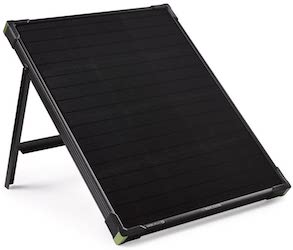 | 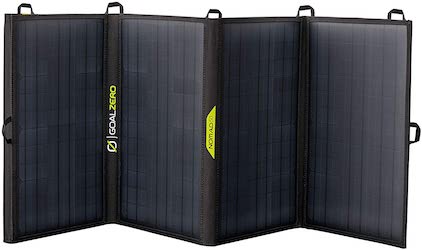 |  | 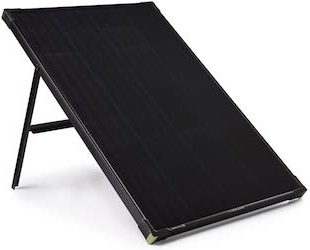 | 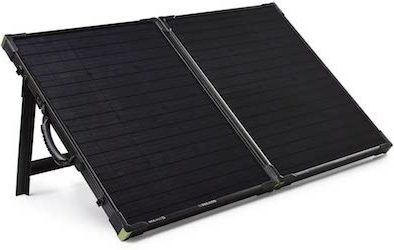 | 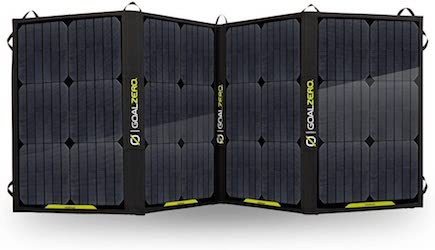 |  | 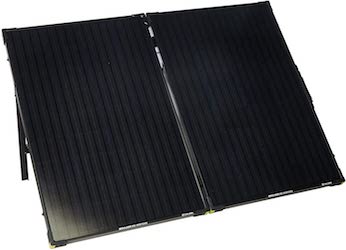 |  | 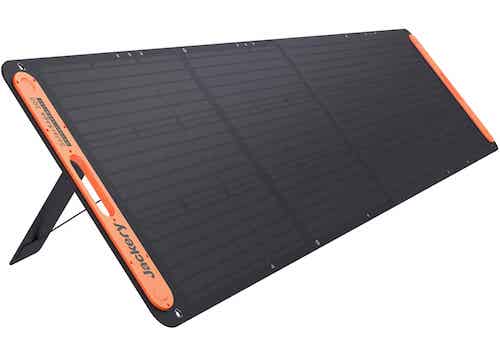 |
|
| Watts (W): | 50W | 50W | 60W | 100W | 100W | 100W | 100W | 200W | 200W | 200W |
| Cell Type: | Monocrystalline | Monocrystalline | Monocrystalline | Monocrystalline | Monocrystalline | Monocrystalline | Monocrystalline | Monocrystalline | Monocrystalline | Monocrystalline |
| Chainable (Y/N): | Y | Y | Y | Y | Y | Y | Y | Y | Y | Y |
| Ports: | 8mm (1) | 8mm (1), USB-A (1), 8mm chaining cable (1) | 8mm (1), USB-A (1), USB-C (1) | 8mm (1) | 8mm (1) | 8mm (1) | 8mm (1), USB-A (1), USB-C (1) | Anderson Powerport (1) | Anderson Powerport (1), USB-A (1) | DC Interface (1) |
| Dimensions (folded): | N/A | 17 x 11.25 x 2.5 in | 16.7 x 21.1 x 1.38 in | N/A | 26.75 x 21.75 x 3.75 in | 20.5 x 15.5 x 2 in | 24 x 21 x 1.4 in | 40 x 26.75 x 3.5 in | 28.2 x 22.3 x 2.0 in | 21.3 x 24.6 x 1.7 in |
| Dimensions (unfolded/standard): | 21.75 x 26.75 x 1.75 in | 17 x 53 x 1.5 in | 33.7 x 21.1 x 0.2 in | 40.0 x 26.75 x 1.75 in | 26.75 x 43.5 x 1.75 in | 20.5 x 59.5 x 1 in | 48 x 21 x 0.2 in | 40 x 53.5 x 1.75 in | 28.2 x 100.7 x 1.0 in | 21.3 x 92.7 x 1 in |
| Weight: | 12.4 lbs | 6.85 lbs | 3.3 lbs | 20.1 lbs | 25.9 lbs | 10.2 lbs | 10.33 lbs | 42 lbs | 22 lbs | 6.39 lbs |
| Open Circuit Voltage (V): | 18-20V | 18-22V | 21.6V | 18-22V | 18-22V | 18-22V | 21.6V | 18-22V | 23.0V, APP 19.1V Max | 24.2V |
| Warranty: | 24 Months | 12 months | 24 Months | 24 Months | 24 Months | 12 months | 24 Months | 24 Months | 12 months | 24 Months |
| Price (Subject to Change): | $149.95 | $249.95 | $179.99 | $249.95 | $299.95 | $399.95 | $299.99 | $499.95 | $599.95 | $599.00 |
| Additional Features: | Kickstand, corner protection | Hanging loops, 2 mesh storage pouches | Carrying handle, grommets, kickstand, charging LED indicators | Kickstand, corner protection | Canvas bag, kickstand, carrying handle, corner protection, binding clips | Hanging loops, 3 mesh storage pouches | Carrying handle, grommets, kickstand, charging LED indicators | Canvas bag, kickstand, carrying handle, corner protection, binding clips | Hanging loops, separate legs w/ stake-down loops, 1 large mesh storage pouch | Carrying handle, grommets, kickstand, waterproof (IP67) |
Unlike Jackery’s three offerings, there are ten solar panel products from Goal Zero under two headings; mountable (Boulder) solar panels and portable (Nomad) solar panels.
For the complete list of Goal Zero’s Boulder solar panels as well as an in-depth discussion on them, I have an article going over each one here: 3 Stages of Camping Solar Panels from Goal Zero.
Goal Zero Nomad vs. Boulder Solar Panels
Goal Zero’s Nomad solar panels are lighter and more portable than their Boulder solar panels. Boulder panels are heavy due to their aluminum frame, making them suitable for temporary or permanent installation. For example, the Nomad 50 weighs 6.85 lbs, while the Boulder 50 weighs 12.4 lbs.
The Nomad panels also support direct device charging.
The Boulder panels do not come with any direct charging features (USB-A, USB-C, Micro-USB), hence you must have a power station connected before they can be used.
This is one of two reasons why the Boulder panels are generally less expensive than the Nomad brand.
The second and main reason the Boulder lineup is less expensive is that they are not as versatile as the Nomad panels.
You can find more information by reading the Nomad vs. Boulder comparison page on Goal Zero’s website.
on Goal Zero’s website.
Below we’ll be comparing 50-200W solar panels from both companies.
We won’t be discussing Goal Zero solar panels under 50 watts because they are much smaller and less powerful than Jackery’s panels.
Jackery SolarSaga 60W vs. Goal Zero Boulder 50 vs. Nomad 50
| Solar Panel | SolarSaga 60W | Boulder 50 | Nomad 50 |
|---|---|---|---|
| Most Port Options | X | ||
| Loops/Grommets | X | X | |
| Kickstand | X | X | |
| Mountable | X | ||
| Most Portable | X | ||
| Lightest Weight | X | ||
| Cheapest Cost | X |
Jackery’s SolarSaga 60W solar panel is better than Goal Zero’s Nomad 50 and Boulder 50 because it’s the lightest (3.3 lbs vs. 6.85 vs. 12.4 lbs) and has more port options. The SolarSaga has a USB-A and USB-C whereas the Nomad 50 has a USB-A and the Boulder 50 has no USB ports.
Similarities & Differences
The SolarSaga 60W panel can be used to carry short distances, but not for backpacking. It is simply too large (even when folded) to be stored and carried in a backpack. It is ideal for camping because of its kickstand and light weight.
The Nomad 50 can be carried in a backpack since it folds four times over. However, it has a slightly smaller power output and has one USB-A port as opposed to the SolarSaga’s USB-A and USB-C ports.
Lastly, the Boulder 50 is mainly used for mounting on vehicles or a rooftop but can be used on the ground with its kickstand if needed. It cannot fold, so it will not be ideal for storage during long hiking trips.
The Boulder solar panels also have the option for mounting brackets to install on a roof of a vehicle or home.
My article on the Boulder 50 and Nomad 50 will show you more details on these two panels to give you a better idea of their differences. Find this article here: Goal Zero Nomad 50 vs Boulder 50 Solar Panels – Which Is More Ideal?.
Final Thoughts
Overall for camping purposes and the likes, the SolarSaga 60W panel is better than the Nomad 50 and Boulder 50 because of its ports and light weight.
Its kickstand makes it much easier to angle the panel correctly towards the sun. Since the Nomad 50 doesn’t have a kickstand, getting the proper angle will take some work.
What sets the SolarSaga apart is that it’s $70 cheaper than the Nomad 50.
However, there are some specific uses for the Goal Zero panels in this category.
- For backpacking, the Nomad 50 is the best option because you can fit it into your backpack after using it on a campsite or rest area to charge devices.
- For mounting, the Boulder 50 is the best option because it has a much sturdier design that will be able to withstand variable weather conditions much better than the others.
Find the Jackery SolarSaga 60W panel by visiting the links below:
Jackery SolarSaga 100W vs. Goal Zero Boulder 100 vs. Boulder 100 Briefcase vs. Nomad 100
| Solar Panel | SolarSaga 100W | Boulder 100 | Boulder 100 BC | Nomad 100 |
|---|---|---|---|---|
| Most Port Options | X | |||
| Loops/Grommets | X | X | ||
| Kickstand | X | X | X | |
| Mountable | X | X | ||
| Most Portable | X | |||
| Lightest Weight | X | |||
| Cheapest Cost | X |
Jackery’s SolarSaga 100W solar panel is better than Goal Zero’s Boulder 100, Boulder 100 Briefcase, and Nomad 100 due to its weight difference and pricing. The SolarSaga is half the weight of the Boulder 100. The Nomad 100 weighs the same as the SolarSaga 100W panel, but costs $100 more.
Similarities & Differences
Goal Zero’s Boulder 100 and Boulder 100 Briefcase models are very heavy and contain just one 8mm port for solar generator charging.
These panels are clearly meant for use in a single location for an extended period of time.
The Boulder 100 is the least expensive option, but it has the least amount of versatility of all the 100-watt options.
The Nomad 100 weighs almost exactly the same as the SolarSaga 100W panel at just over 10 lbs. The Nomad 100 has only one 8mm connector for Goal Zero solar generators but folds four times over to be much more compact.
The SolarSaga 100W panel has two USB port options in addition to its solar generator charging cable and also has a kickstand, whereas the Nomad 100 doesn’t have any of these options.
Final Thoughts
The SolarSaga 100W solar panel is the better option for off-grid use overall because the only area where it loses to the Nomad 100 is in its portability/foldability.
Since they both weigh about 10 lbs, the Nomad 100 may be better for carrying long distances, but it is still too big to store in most backpacks.
Find the SolarSaga 100W solar panel via the links below.
Jackery SolarSaga 200W vs. Goal Zero Boulder 200 BC vs. Nomad 200
| Solar Panel | SolarSaga 200W | Boulder 200 BC | Nomad 200 |
|---|---|---|---|
| Most Port Options | X | ||
| Loops/Grommets | X | X | |
| Kickstand | X | X | X |
| Mountable | X | ||
| Most Portable | X | ||
| Lightest Weight | X | ||
| Cheapest Cost | X |
Jackery’s SolarSaga 200W solar panel is lighter and more portable than Goal Zero’s Boulder 200 and Nomad 200. The SolarSaga 200W weighs 6.39 lbs compared to the Nomad 200’s 22 lbs and Boulder 200’s 42 lbs. When folded, the SolarSaga measures 21.3×24.6×1.7 in versus the Nomad’s 28.2×22.3×2 in.
Similarities & Differences
The Nomad 200 weighs 22 lbs, whereas the SolarSaga 200W weighs 6.39 lbs. In addition, the SolarSaga 200W takes up less space than the Nomad 200 when folded and unfolded.
SolarSaga 200W
- Folded: 21.3 x 24.6 x 1.7 in
- Unfolded: 21.3 x 92.7 x 1.0 in
Nomad 200
- Folded: 28.2 x 22.3 x 2.0 in
- Unfolded: 28.2 x 100.7 x 1.0 in
These two factors (size and weight) are the most important comparison factors because they are both considered “portable” solar panels. The Jackery 200W solar panel, in this case, is the clear winner.
Goal Zero vs. Jackery Solar Panels – Which Is Overall Better?
Jackery’s SolarSaga solar panels are better than both of Goal Zero’s Nomad and Boulder solar panels from 50-200W.
These lightweight panels in addition to their foldable designs, carrying handles, and stable kickstands conclude that they can easily be carried in most applications and are especially suited for an outdoor experience or in case of emergency.
For more information on specific products, check out some of my article choices below:
Jackery Explorer 300 vs 500 – Overview & Analysis
YETI 500X vs 400 – Goal Zero Comparison Piece
YETI 1400 vs 1500X – Goal Zero’s Solar Generator Giants
Jackery Explorer 300 Review (Comparison & Analysis)
Jackery Explorer 1000 Portable Power Station – Review and Analysis







